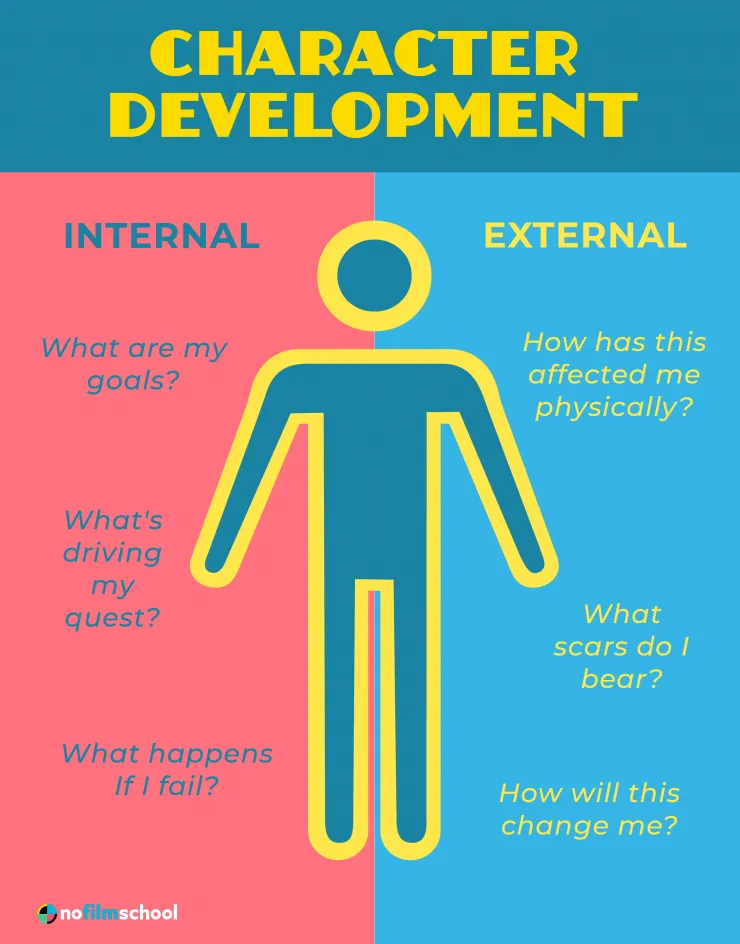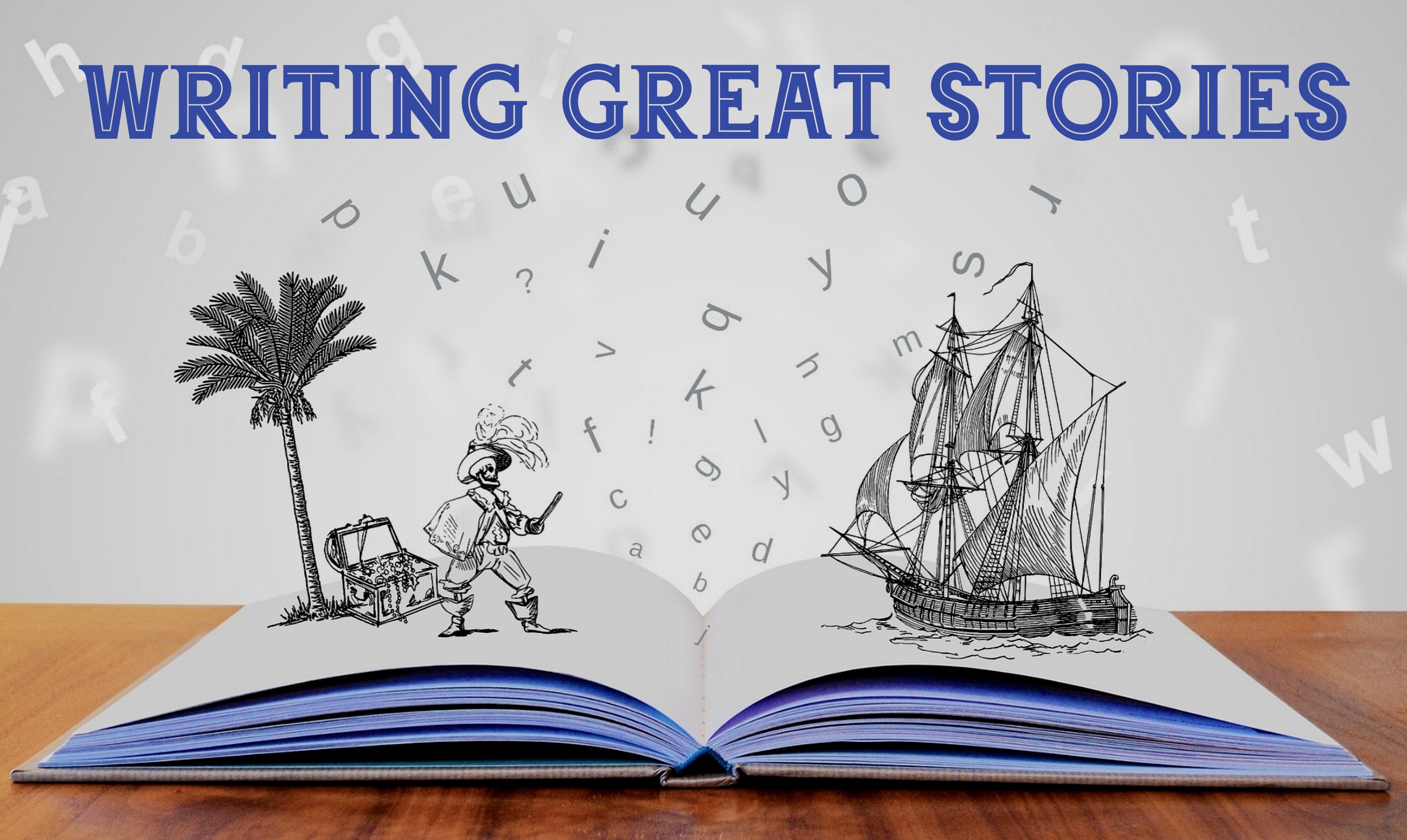Cave paintings tell us that even before formal language was developed Man wanted to tell his story to the world. Great writers like Ernest Hemmingway, Charles Dickens or Jane Austen wrote because they wanted to tell of their experiences, their ideas and eventually leave behind a unique mark.
Hemmingway said, ‘There’s nothing to writing. All you do is sit down at the typewriter and bleed.’
Anybody can write.
What is more important is to know why you want to write. It is not easy to hammer out 60,000 words that tell a story in such a way that people will want to read it. So it is important that you know the reasons you want to write one. I know a writer who wrote a book just to gift it to his daughter. He was not interested whether anyone else read it or not. Great reason. Noble thought. That’s what I think.
So WHY do you want to write?
My reply is: I have always wanted to spin stories that would be as compelling a read as those of my favourite authors. It was a challenge I threw at myself.
This may not be your reason. The reasons for writing fiction could be as diverse as there are people.
- It is possible you feel very strongly about an issue and want to communicate it to the world. Take for instance, George Orwell’s 1984. He was concerned about totalitarian governments taking away people's rights and freedoms. So he wrote 1984 which is, today, too close to reality for comfort.
- Maybe, you would like to bring to the world a unique experience as happened in the case of Roots by Alex Haley or in ER Braithwaite’s To Sir, with Love; made into a wildly popular film. In my book, Dangle, I wanted to take my readers to beautiful Manipur, closed to tourists and ravaged by insurgency portrayed through eyewitness accounts.
- However, you may just want to entertain readers with a romance or make them shake in their shoes with the supernatural or thrill them with a whodunit.
- Or you may want to explore the truths of Life, as in Hemmingway’s Old Man and the Sea.
- Or none of these reasons work for you. Your Why could be quite different.
But whatever it may be, there is absolutely no doubt that the starting point is the Why or Whys.
Knit the Whys into your writing
Once the whys are clear to you, knit them into your fiction so that they are comprehensible as well as enthralling to the reader.
Depending on your whys, there are different ways of weaving them in. While your basic story could be a simple one, your Whys to emerge naturally and smoothly from the tale.
Let’s consider The Old Man and the Sea. At one level it is the simple tale of a man and a fish. At another, it is a story of man versus nature. The entire story takes place over a few hours but the dynamics of those hours are sufficient for the message to come across. The book cannot but make you think about courage in the face of existence. Not just that impressions remain with us over the years.
As a writer you have to structure your novel so that your communication to your readers is crystal clear. Therein lays your skill. Writing is a conversation between the reader and the writer. Remember, if readers do not understand your communiqué or misinterpret it, a writer cannot blame them for their inability. The ball is firmly in your court to convey the Whys of your fiction. It is not their responsibility to seek them out.
There is a range of styles through which your whys can be communicated in your writing. Just remember to choose an effective style. Take a look at the styles of some well-known works of fiction. You could write:
- A narrative like Jane Austen’s Pride and Prejudice
- A fantastical satire such as Alice in Wonderland or Gulliver’s Travels.
- It can be a first person account such as in Jhumpa Lahiri’s Namesake
- You tell the story in flashbacks as in Lahiri’s The Lowlands.
- It can be in the form of letters like Jean Webster’s Daddy Longlegs
- You may decide to use the stream of consciousness as in Woolf’s Mrs Dalloway.
- You might want to do things differently like Davy Eggers in Your Fathers, Where Are They? And the Prophets, Do They Live Forever? Written in 2014, the story is told entirely in dialogue.
Fiction is a potent and powerful medium. Whether you want to entertain or express your point of view you must tap its potential to the fullest.
The What of writing fiction
When you have decided the most effective style, let’s discuss the components that will contribute to its efficacy. We may call it the What of writing or the chassis on which your fiction is mounted.
No doubt that writing is more of an intuitional skill, born out of good reading and a great deal of practice. However, it is useful to know about the elements that constitute the What of writing. The six main elements are character, plot, setting, point of view, theme and style.
Character
Characters are the people through whom your reader experiences the story. Usually there is a main character or protagonist, another character who opposes the main character, also known as the antagonist and other minor characters. The trick is to make these fictional characters appear absolutely real. Flat cardboard characters bore readers. We need to make them 3D but how?
Your characters need a back story or a history that makes them react in specific ways to events in the story. Remember the behaviour and thought processes of Amy Elliot Dunne in Gone Girl? Much of those could be attributed to her background.
A little research into psychology helps to make the responses of your characters logical. They must behave in ways that makes sense for human beings. John Green’s A Fault in Our Stars is a moving story. But the portion when Hazel Grace’s mother is wallowing in self-pity because she will cease being a mother once her daughter dies is an amazing bit of psychoanalysis. It was a typical human survival response to a traumatic experience. I was stunned at how the writer gauged it so precisely.
Build a character arc. Your character must change or evolve from the beginning to the end. In my historical novel, Padmavati, the main protagonist, the Queen of Chittor discovers little by little her own strengths. She is a naïve girl when she comes to Chittor but events force her to evolve into a woman who not only takes her own decisions but stands by them. When she sits on the Jauhar pyre, she is calm and collected. Her fortitude makes her nearly divine as she embraces her destiny.
If characters are flat, readers have trouble empathizing with them. When your characters feel real and relatable, readers will lap up your story.

Image Source: nofilmschool.com
Plot
The scaffolding on which your story hangs is the plot. It begins with the premise, which is the basic story in a nutshell. This is expanded into a sequence of events taken forward by the characters. Plot can be divided into five stages.
- Exposition or introduction, which introduces characters and setting.
- Rising action, that displays the conflicts. Conflicts which are struggles between the protagonist and the antagonist, is a must for every good story. Some kind of conflict needs to be developed even if it is purely a struggle in the protagonist’s mind with a heavy emotion.
- The plot, through conflicts, moves to the climax, also known as the turning point. It is the point where emotion, tension and interest peak.
- Falling action is the stage when things start to wind down. The tension you have created at the climax stage has to be actively resolved. You must address here the solutions to all the issues you have raised till then.
- Lastly, the plot comes to resolution. This is the ending when you bring the story to its logical conclusion, to the point where the events of the plot have been leading. Resolution doesn’t mean that the ending must be happy. It can be sad but the ending must be satisfactory to the reader, even if you are planning a sequel. When you come to the end of Amish Tripathi’s Scion of Ishakavu, you are conscious that the story will continue but the solutions in that part of the tale have been tied quite satisfactorily.
Image Source: vanillagrass.com
Setting is the physical location (real or invented) and the social environment of the story (including chronology, culture, institutions, etc.)
In many ways, it’s similar to character. No, setting doesn’t have feelings, but characters are forced to interact with it everywhere they go and in everything they do. Setting actually helps develop characters and tells us things like:
- The skills they develop to survive
- The tools they have (weapons, money, clothing, transportation)
- Cultural nuances for communication (speech, body language, rules of interaction between genders or classes). Notice the kind of colloquial language that Mark Twain uses in The Adventures of Huckleberry Finn.Besides nailing Huck’s education level, social background and personality, Twain succeeds in telling the story convincingly through the eyes of a thirteen-year old.
- The concepts characters bring into the story (religion or philosophy, or things that will decide how they react to events)
You may need to research when designing settings to make them real. You may need to find answers to questions like: What is the weather in the region? Or What spices are used in avial? I had to certainly research a great deal when I was creating the setting for The Legend of Genghis Khan. I needed to find out everything about Mongolians in the 11th century; language, customs, food, clothes, war strategies, weapons used and so much more.
Your characters live in this world. Make it come alive for your readers. Have fun building it. It is one of the most creative and interesting part of storytelling.
Point of view
This is a very important element because it actually connects you as a writer with your reader. Basically, it is a combination of the following:
- The overall perspective from which the story is told
- The narrator’s point of view
- The attitude or belief of the author
Point Of View in writing is fun but also tricky. It determines tense and how much the reader gets to see. There’s first-person (I, my), second-person (you, your), and third-person/narrator (she, hers). There’s present tense (I see/she sees), past tense (I saw/she saw), and future tense (I will see/she will see).
It’s the combination of these things that creates an effective POV. So how do we go about it? There two things to focus on.
1.The style you have chosen
Different genres often use different POVs.
- Urban fantasy, for example, is almost always first-person past-tense, because they take the approach of a person telling you an exciting thing that has happened. There’s an intimate, immediate feel that goes with this close-up-and-personal viewpoint, like seeing the fist come right for your face. My book The Cursed Inheritance has a first person POV which made it very relatable to its readers.
- On the other hand, literary fiction usually uses third-person POV because it has a much broader scope. It needs to be able to take the reader to a bird’s-eye view, usually seeing the events through multiple characters. The pace is often a little slower, but the impact can be deeply powerful, and tends to explore consequences. Pride and Prejudice by Austen is a third person narrative which gives different views of the social environment.
2. How much do you want your reader to see?
- Do you want the reader to see things happening outside your protagonist’s point of view? Do they need to see things your protagonist does not see, or hear things your protagonist does not hear? Then you need third-person POV.
- Do you want the reader to discover things as when your protagonist does? Do you want your reader to cry and rage with your protagonist, seeking for answers? Then first-person might be better.
Here are some examples of tenses according to the POV.
- Want third-person present tense? (She turns and sees him, and wonders if the unearthly wailing can stop one’s heart.)
- Want first-person past tense? (I turned and saw him, and found myself wondering if the unearthly wailing could stop my heart.)
- Want second-person future tense? (You will turn and see him, and you will wonder if the unearthly wailing will stop your heart.)
Theme
This is the element into which you can easily weave in some of your whys.All fictions have themes. Even authors who don’t want a theme use it, such as personal beliefs on how the world works.
The tricky thing about theme is it should rarely be bluntly stated; the moment you do, your work slides into the “preachy” category. If you can get the point across without ever frankly stating it—your readers will actually take it to heart a lot more deeply.
Effective stories are written by authors who are clear about their themes. One of the best stories, I have read, with a strong theme is Pearl S Buck’s The Good Earth.
Style
Style is important because it is your signature. Style is what makes your work distinct from everybody else’s, because in essence, it’s your ‘voice'.
By working on technique, we can develop style. Syntax, word choices, and tone contribute to this. Style expresses not only your voice as a writer, but it is used to indicate details about your story and characters. Style shows accent and dialect, character intelligence and observation; it brings out the underlying humour or drama in your writing. Style is a writer’s unique flavour. To illustrate, both PG Wodehouse and James Joyce, wrote in the 1920s-30s. Their style or voice was easily identifiable and very distinct in their writings despite their writing being completely different.
It may take an entire writing career to develop style but it is one of the most rewarding parts of being a writer. It takes a lot of slogging to develop style. There are no short-cuts but it can be fun too. Some tips are:
- Read a lot. Exposure to variety ends up giving you that many ingredients to cook with as you develop your style. Read books from different countries, different genders, different cultures. Read everything and learn as you go.
- Write a lot. No writing is ever wasted. Practise, practise, and practise some more.
- Read aloud. Reading your work out loud will let you hear if your writing reads like writing or like telling a story. Anything that reads like writing is a no-no.
- Listen. Listen to people. Listen to conversations. Tone is a crucial component of style, and you’ll need to learn how to convey that in your work—but you can’t convey it if you don’t know what it sounds like.
You must be thinking. OMG! This sounds like a lot. And you’re right, it is. However, if you’re a dedicated reader, I think you’ll have already noticed some if not all these elements in most good stories. Some of the greatest stories I know and love have all of these elements. If you are passionate about your story, incorporating them into your writing will not be as difficult as it may seem.

Image Source: www.contentcreatorz.com
Finally, we come to How to write fiction.
The first time I sat in front of my laptop to begin writing Dangle, I had the heebie-jeebies. So I decided to go with a process…one that has been followed by most well-known writers. The premise was ready. I was sure who the main protagonists of my story were. The structure of the plot was laid out in my mind. So I buckled down to outlining the first ten chapters in black and white.
Based on my learning, here are some basics.
Outline
On his website, Author Ken Follet says that an outline is an absolute necessity to him. Writing an outline always helps to put your thoughts in order and makes it easier to correct your mistakes.
What is an outline? An outline usually tells what happens in the novel, chapter by chapter and also sketches biographies of the characters. But don’t feel constrained by it. They are road maps that allow flexibility. Take a look at the outlining process.
Build a tight premise
Begin your outline with a tight premise which becomes a solid guide to your story telling. See that it answers the following questions:
- Who is the protagonist?
- What is his/her objective?
- What is the situation?
- What is the original condition of the protagonist and how will it change for the better or worse at the end of the story?
- Who is the opponent?
- How will the opponent prevent the protagonist from reaching his/her objective?
- What is the conflict?
- What is the resolution?
When you have the answers, combine them into one or two sentences and you have a fleshed-out premise.
Make brief sketches of scene ideas
List out the scenes that come to your mind when you think of the premise. Highlight those in the list that raise questions and then answer them. Ensure to use a great deal of freedom and creativity during this part of outlining.
Profiling characters
You need to create a cast of characters that leads you through your story. Start profiling their lives from when they appear in your story.
Choose settings
Select settings that are inherent to the plot. Based on the scene ideas, make a list of settings.
Complete the outline
Now you will need to write out the complete plot. How elaborate you want it to be is up to you. You can write single sentences or more for each scene.
Concise your outline
It is possible that your outline may have become extensive and you will want to condense it.
Put your outline to action
Now you can get going on your first draft. While the outline will be a guide, never be afraid to deviate from it or explore new ideas.
Outlines are also helpful when you want to send your story for either reader feedback or to your publisher because it is your story in a nutshell.
Write what you love
For your writing to be worth anything, write what you love reading. Just because the market is good for romances, you decide to write a romance even if it is a genre that does not appeal to you. The chances are your romance will not appeal either. As a writer, I am fond of discovering how the human mind works and thrillers chill me out. So all my books from historical novels to true-blue thrillers to short stories have the leit motif of mystery running through them.
Having read a great deal of your favourite genre, you will be able to instinctively sketch out the scenes, dialogue and action. Good writers always read with an eye for the writing. Unconsciously they learn and then use them in their own writing.
Know about structure
Any aspiring writer must learn about the elements that comprise the elements of a story, such as protagonist, antagonist, conflict, arc, climax, resolution, character, back story. If you do not bother to study about these, your novel could be missing a few and may turn out incoherent or flat.
Structure is how the story is organized. Plot comprises of the main events. Setting is the time and place where the story occurs. Characters are the people in the story. Finally, the theme is the main message, the central idea, of the story.
Make time
You may have been dreaming for years but if anyone tells you to write, you say, ‘I am too busy.’ Not just you, everybody is busy with family, work and a trillion other things. But if you are serious about writing your book, you will make time for it. Steal time from your schedules, get up earlier, sleep later…do whatever works for you. If you have the passion you must find the way. I gave up a corporate job and a fat salary to just write all day but that was my choice. You may do it differently but never be too busy to write. As Jack London said, ‘You can’t wait for inspiration; you have to go after it with a club.’
Rewrite
However good you think you are or how much ever your friends praise your writing, your first draft is never good enough. Sending a first draft to an editor or agent is asking for a sure rejection of your manuscript. First drafts are only the beginning. Write it and keep it away for a couple of weeks. Then go back to look at it with new eyes. Sure enough you will find gaps to fill and holes to plug. Never hesitate to rip, rip and rip again. Refine your writing till it is a polished jewel. As Dorothy Parker said in, The Art of Fiction, ‘I would write a book, or a short story, at least three times – once to understand it, the second time to improve the prose, and a third to compel it to say what it still must say.’
For me, rewriting is a must-do. Whether a short or long fiction, only after several drafts do I send it to my editor and then go through more drafts before editing starts.
True writing is rewriting. When you revise magic happens. The best, most inspired ideas often appear during rewriting.
Your voice
Read other writers as much as you can but never try to copy anyone’s style or narration. Develop your own way of telling a story. Each of us has a unique way of speaking, then why should we write like others? The specific way we write is called our ‘voice’. It is not only a unique way of putting words together, but a unique sensibility, a distinctive way of looking at the world, an outlook that enriches a writer’s opus.
Voice is the distinct personality, style, or point of view of your writing. That is what Simon Cowell means when he tells ‘American Idol’ contestants to make the song their very own and not just do a note-for-note karaoke version.
Besides voice is a significant qualitative element of all good writing and every writer must develop one.
And lastly
Ignore the rules (Including mine)
You will get as much advice and theories as people. They will want to pigeonhole you, put you in a genre with its own rules and traditions. But like all rules, these are indicators to show you direction. None of it is must-do but it is good to be informed so that you are that much aware of the why, what and how that categorises good writing.
Shakespeare or Tolstoy didn’t follow rules. I think many of us, writers, write better when we leave restrictions behind… when the only thing to be true to is ourselves and our writing.
Let me leave with this thought to chew on.
Writing fiction is an art. At the end of the day, it requires a lot of patience, practice and determination. Eventually, it is well worth the effort because that is what transforms just any fiction into great fiction!
Sutapa Basu is the author of Padmavati, The Queen Tells Her Own Story (2017, Readomania), The Legend of Genghis Khan, and The Curse of Nader Shah. She won the AutHER award for Best Fiction 2019 by The Times of India and JK Papers, for her book, The Curse of Nader Shah.


Comments